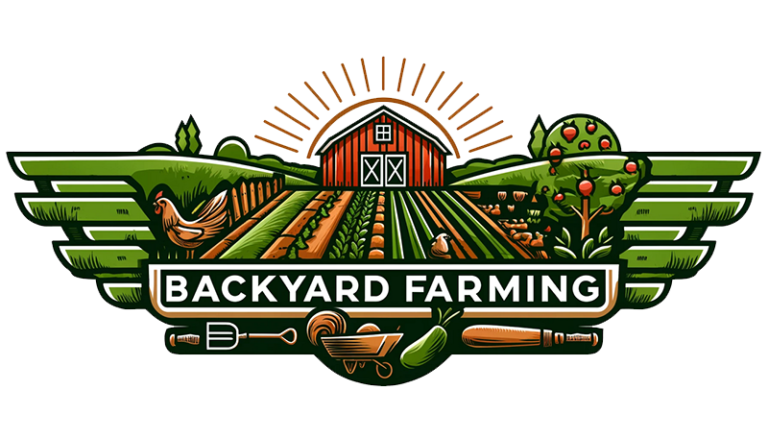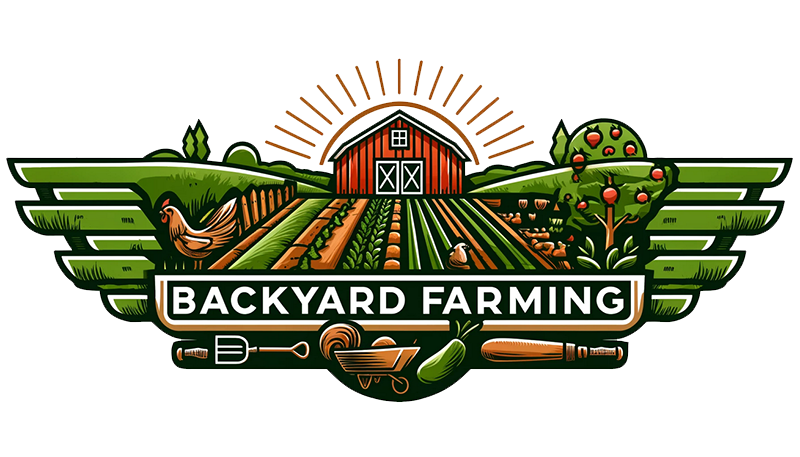Welcome to Backyard Farming Life, where we explore the wonders of turning your backyard into a bountiful food-producing farm. In this comprehensive guide, we will delve into the exciting world of vertical farming in backyards, focusing on choosing the best vegetables and setting up a thriving vertical farming system. Whether you’re a seasoned gardener or just starting out, this article will provide you with valuable insights to maximize your homegrown produce. Let’s get started!
Choosing the Right Vegetables for Vertical Farming
1. Tomatoes
Tomatoes are exceptionally well-suited for vertical farming in backyards, thanks to their vining nature and prolific yield. There are various factors to consider when cultivating tomatoes in a vertical garden to ensure a successful and bountiful harvest. Here are some key points to keep in mind:
- Varieties:When selecting tomato varieties for vertical farming, consider options such as cherry tomatoes, Roma, and heirloom varieties. These particular types are known for their adaptability to vertical systems and can be effectively trained to grow upwards with appropriate support.
- Cultivation Techniques: Proper techniques for cultivating tomatoes in vertical gardens include using sturdy trellises, cages, or stakes for support. When implementing these structures, it is important to ensure that the tomato plants have adequate space to flourish and receive ample sunlight for optimal growth.
- Soil and Feeding: Utilizing nutrient-rich soil and providing a balanced feeding regimen are crucial for nurturing healthy tomato plants. Additionally, incorporating organic fertilizers and compost into the soil can enhance the overall vitality and yield of the tomato plants.
When properly cared for, tomatoes are capable of producing vibrant, flavorful fruits that contribute to the visual appeal and culinary diversity of any vertical garden. By implementing strategic cultivation methods and selecting appropriate varieties, vertical farming enthusiasts can enjoy a satisfying and thriving tomato harvest from their backyard gardens.
2. Peppers
Peppers are a diverse group of plants that thrive in vertical farming setups. From sweet bell peppers to fiery chili peppers, there is a wide range of varieties to choose from, each offering its own unique flavor and culinary possibilities. Vertical farming enthusiasts can take advantage of peppers’ compact size and vertical growth habit to maximize the use of limited space. This makes peppers an ideal choice for creating a flourishing and visually appealing vertical pepper garden right in the comfort of your backyard.
3. Lettuce and Leafy Greens
Lettuce and leafy greens, such as spinach and kale, are well-suited for vertical farming due to their low profile and rapid growth. These nutritious greens thrive in vertical systems and provide a continuous harvest of fresh leaves for salads and culinary creations. Growing these greens vertically allows for efficient use of space while keeping your backyard filled with lush, vibrant greens.
- Benefits of Lettuce and Leafy Greens in Vertical Farming:
- Lettuce and leafy greens are excellent sources of essential nutrients, including vitamins A, C, and K, as well as folate and fiber.
- These greens have a short growth cycle, allowing for multiple harvests throughout the growing season.
- They can be easily integrated into vertical farming systems, making efficient use of space and resources.
- Tips for Growing Lettuce and Leafy Greens Vertically:
- Consider using hydroponic or aeroponic systems for optimal growth and resource efficiency.
- Ensure proper spacing and lighting to promote healthy growth and prevent overcrowding.
- Regularly monitor moisture levels to prevent wilting and ensure optimal conditions for thriving greens.
4. Cucumbers
Cucumbers are a wonderful addition to any vertical farming setup, thriving in environments where they can climb and spread with proper support. With a wide array of cucumber varieties available, you can savor an assortment of flavors and textures, bringing a refreshing touch to your homegrown produce. Cucumbers are known for their versatility in the kitchen, being perfect for fresh salads, pickling, and even refreshing beverages such as cucumber-infused water or lemonade. Their high-water content makes them incredibly hydrating, and their crisp texture adds a delightful crunch to any dish.
When it comes to vertical farming, cucumbers are an excellent choice due to their space efficiency and vertical growing habits. These vines climb with grace and thrive when provided with adequate support, making them a perfect fit for small backyards or urban environments. The aesthetic appeal of cucumber vines climbing trellises and arbors adds a visually stunning element to any gardening space, creating a picturesque and vibrant green backdrop.
One of the key advantages of cultivating cucumbers in a vertical farming system is the improved air circulation it offers. Vertical growth encourages better airflow, reducing the risk of fungal diseases and promoting healthy plant development. It also allows for easier maintenance and harvesting, as the cucumbers hang freely and are more accessible for picking.
To successfully grow cucumbers in a vertical farming system, it’s important to consider various factors that contribute to their robust growth and bountiful harvest. The choice of suitable support structures, such as sturdy trellises or stakes, plays a vital role in ensuring the stability and health of the climbing vines. Proper pruning is essential to remove any dead or diseased foliage, allowing the plants to channel their energy into new growth and fruit production. Consistent moisture levels are crucial for the optimal development of cucumbers, as they require ample watering to thrive and produce flavorful, juicy fruits. Additionally, providing the right balance of temperature and sunlight is key, as cucumbers thrive in warm, sunny environments, benefiting from ample sunlight and moderate temperatures.
5. Herbs
Herbs are a delightful addition to any vertical garden, bringing a world of flavors and aromas right to your backyard. Their versatility and ease of growth make them an essential component of a thriving vertical farm. Let’s take a closer look at some popular herbs and explore the unique characteristics that make them perfect for vertical gardening:
- Basil: This aromatic herb is a culinary favorite, known for its sweet and refreshing flavor. It not only enhances a wide range of dishes but also acts as a natural pest repellent, making it an invaluable addition to your vertical garden.
- Mint: With its invigorating and cooling properties, mint is a multifaceted herb that adds a burst of freshness to beverages, desserts, and savory recipes. Its vigorous growth habit makes it an ideal candidate for filling vertical garden spaces.
- Oregano: As a robust and resilient herb, oregano is a staple in Italian and Mediterranean cuisine. Thriving in warm, sunny environments, it infuses culinary creations with a distinctive earthy flavor.
- Parsley: Known for its vibrant green leaves and fresh, herbaceous taste, parsley is a versatile herb that complements a wide range of dishes. Its delicate appearance makes it an attractive addition to vertical gardens, adding visual appeal along with its culinary benefits.
- Thyme: This aromatic herb, with its subtle lemony flavor, is a versatile addition to any garden. Its creeping growth habit allows it to cascade beautifully in vertical spaces, creating a stunning visual display while providing a rich source of flavor for culinary uses.
- Rosemary: With its woody fragrance and pine-like flavor, rosemary is a hardy herb that thrives in vertical environments. Its resilience and resilience and fragrant presence make it an exceptional herb for both culinary and ornamental purposes in vertical gardens.
Vertical herb gardens not only create a visually stunning display but also yield an abundant supply of fresh, aromatic herbs right at your fingertips. By ensuring proper care and maintenance, herb gardens can flourish and become an integral part of culinary adventures, offering an enriching experience for gardeners of all levels.
6. Beans
Beans, including pole beans and bush beans, are excellent choices for vertical farming, offering a bountiful harvest in a compact footprint. Their climbing nature enables them to grow vertically, making efficient use of space and providing a continuous supply of tender pods for your home-cooked meals.
As we conclude our exploration of vertical farming in backyards, we hope you’ve gained valuable insights and inspiration to embark on your own vertical farming journey. By choosing the best vegetables, setting up a well-designed vertical farming system, and caring for your crops, you can transform your backyard into a thriving source of homegrown produce. The joys of harvesting and enjoying your homegrown vegetables are unparalleled, and the benefits of vertical farming extend far beyond the garden. We encourage you to seize the opportunity to bring the bounty of the outdoors into your backyard and experience the rewards of growing your own delicious, fresh vegetables.

